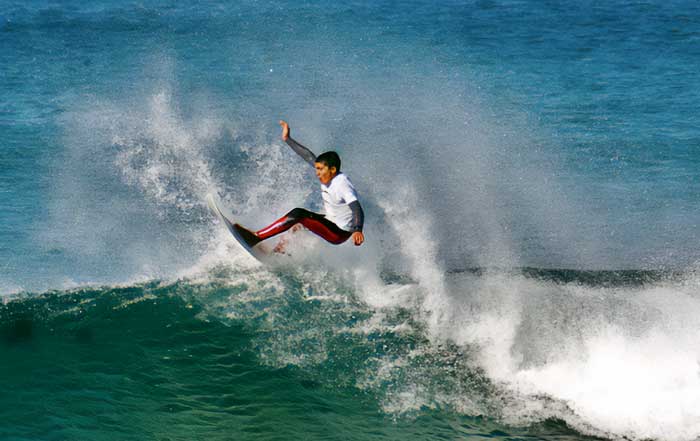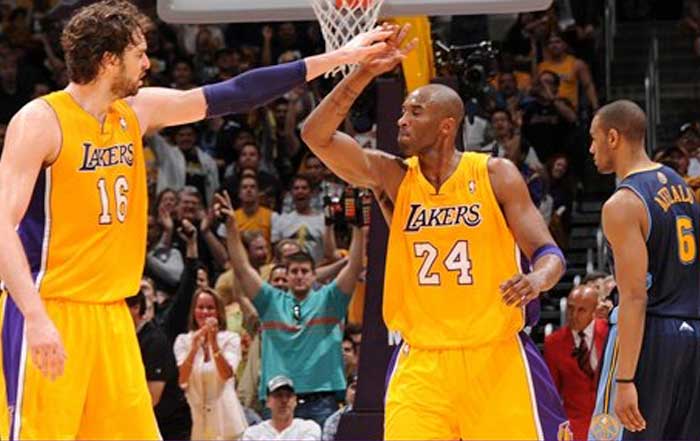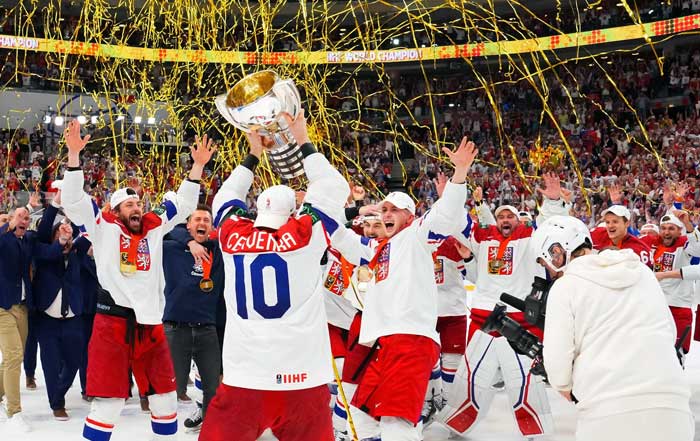Extreme sports have long captured the imagination of adventurers, athletes, and thrill-seekers across the globe. So, the popularity of these high-risk, high-reward activities continues to grow, driven by social media exposure, advancements in safety equipment, and a cultural shift toward valuing experiences over material possessions. From mountain peaks in the Alps to urban streets in Los Angeles, extreme sports thrive as a lifestyle, a business sector, and a form of cultural expression.
For readers of xdzee.com, where passion for sports, adventure, and travel meets thoughtful business and cultural insights, extreme sports represent not only adrenaline-filled challenges but also global opportunities. They are a symbol of resilience, innovation, and a bridge between performance and lifestyle.
The Evolution of Extreme Sports
Early Beginnings and Cultural Roots
Extreme sports are not a new phenomenon. Centuries ago, communities around the world practiced activities that today might be considered extreme. Ancient Polynesians surfed waves on handmade boards, while Scandinavian cultures embraced skiing not just as transportation but as a daring form of recreation. Over time, these pursuits transitioned from cultural traditions into organized sports with international appeal.
The rise of modern extreme sports gained momentum in the late 20th century with the invention of skateboarding, snowboarding, and BMX riding. Events such as the X Games, founded in 1995, provided a platform for athletes to showcase their daring feats, transforming niche hobbies into global spectacles. The turn of the century saw new forms of extreme sports influenced by urban environments, digital content creation, and increasing global connectivity.
Mainstream Recognition and Media Influence
Extreme sports achieved mainstream recognition thanks to televised competitions, sponsorship from major brands like Red Bull and Nike, and the explosive growth of social media platforms such as Instagram, TikTok, and YouTube. These digital arenas allow athletes to share content instantly, amplifying their reach beyond stadiums and specialized events. Viral stunts performed by athletes like Tony Hawk and Travis Pastrana shaped cultural perceptions of what it means to push human limits.
Today, platforms such as ESPN and Olympics.com showcase extreme sports alongside traditional ones, highlighting the growing recognition of their legitimacy in the athletic world. In fact, skateboarding, surfing, and sport climbing are now Olympic sports, marking a major milestone in their evolution.
Categories of Extreme Sports
Aerial Sports
Skydiving, wingsuit flying, paragliding, and base jumping belong to this category, offering unmatched adrenaline and breathtaking scenery. These sports attract enthusiasts to iconic destinations such as Interlaken in Switzerland and Queenstown in New Zealand, cities often called the world’s adventure capitals. Technological advancements, like improved parachute systems and lightweight wingsuits, have made these sports safer while expanding accessibility.
Water-Based Sports
Extreme water sports range from big-wave surfing in Hawaii to white-water rafting in Costa Rica’s Pacuare River. Freediving and kiteboarding have also surged in popularity, appealing to those who seek harmony between athletic challenge and natural beauty. Kelly Slater’s Surf Ranch in California demonstrates how artificial wave technology is shaping the future of surfing, making training possible regardless of ocean conditions.
Learn more about global surf trends on World Surf League.
Mountain and Snow Sports
Snowboarding, heli-skiing, ice climbing, and mountaineering attract athletes to alpine regions in France, Italy, Austria, and Canada. These sports demand a balance of technical skill, physical endurance, and respect for nature’s unpredictability. Extreme skiing events like the Freeride World Tour highlight the daring artistry and competitive edge of snow-based adventure.
For insights into winter performance, explore xdzee.com/performance.
Urban Extreme Sports
Urban landscapes provide the canvas for skateboarding, parkour, freestyle BMX, and rooftop climbing. Cities like London, Tokyo, and Barcelona have become cultural hubs for these sports, blending creativity with defiance of conventional boundaries. Urban extreme sports embody the youth-driven movement to reclaim public spaces as arenas for self-expression.
Discover more about the cultural impact on xdzee.com/culture.
🏂 Extreme Sports Hub
Explore the World of Adventure
$250B
Global Market by 2030
1995
X Games Founded
Evolution Timeline
Ancient Origins
Polynesian surfing, Scandinavian skiing
Late 20th Century
Skateboarding, snowboarding, BMX emerge
Olympic Recognition
Skateboarding, surfing, climbing in Olympics
Safety, Technology, and Innovation
Safety has always been central to the evolution of extreme sports. While the thrill lies in the risk, modern technology ensures that athletes can push boundaries more responsibly. Protective gear like impact-resistant helmets, smart wearables that monitor heart rates, and drones used for rescue missions are now standard tools in the industry.
Companies such as GoPro and DJI have revolutionized the way extreme sports are recorded, enabling athletes to share their experiences in high-definition from unique perspectives. Meanwhile, AI-driven predictive models are helping organizers assess weather and environmental risks more effectively, enhancing safety protocols in dangerous terrains.
For more innovation insights, visit xdzee.com/innovation.
The Business Ecosystem Behind Extreme Sports
Sponsorship and Brand Partnerships
Extreme sports have evolved into a multi-billion-dollar industry, largely fueled by sponsorship and brand partnerships. Companies recognized early on that associating their names with fearless athletes would resonate with younger, risk-embracing audiences. Red Bull set the standard, creating a marketing empire by investing in extreme sports events, from cliff diving competitions to air races. Similarly, GoPro leveraged its compact camera technology to align itself with adventure enthusiasts, turning athletes into content creators and brand ambassadors.
Sponsorship now extends far beyond gear and energy drink brands. Luxury companies like Louis Vuitton and Gucci have collaborated with snowboarders and skateboarders, highlighting the crossover between adventure and lifestyle markets. Streaming giants such as Netflix and Amazon Prime Video produce documentaries about extreme sports athletes, further integrating these activities into mainstream culture.
To explore more about the relationship between sports and commercial opportunities, readers can turn to xdzee.com/business.
Tourism and Adventure Travel
Extreme sports are a cornerstone of the adventure tourism sector, with travelers seeking destinations that combine natural beauty with thrilling activities. In New Zealand, Queenstown markets itself as the adventure capital of the world, offering bungee jumping, skydiving, and canyoning. Canada’s British Columbia has become a hub for mountain biking and heli-skiing, while South Africa attracts divers eager to cage-dive with great white sharks.
Tourism boards increasingly position extreme sports as an economic driver, contributing billions annually to local economies. Resorts in the Swiss Alps market heli-skiing and off-piste snowboarding packages, while cities like Barcelona capitalize on their skateboarding culture. Extreme sports tourism not only boosts the travel sector but also supports related industries such as hospitality, retail, and jobs in guiding and instruction.
Learn more about global adventure destinations through National Geographic Travel.
Employment and Career Opportunities
While many people associate extreme sports with daring athletes, the industry provides diverse career opportunities. Event managers, safety experts, adventure photographers, equipment designers, and social media strategists all contribute to its growth. Jobs related to extreme sports are expanding in regions with strong outdoor industries, such as Colorado, Alberta, Bavaria, and Norway.
Athletes themselves increasingly function as entrepreneurs, building personal brands through YouTube channels, TikTok sponsorships, and merchandising lines. The rise of platforms like Patreon and direct-to-fan sales enables athletes to monetize their content and establish sustainable careers beyond competitions.
Readers can stay informed about such opportunities through xdzee.com/jobs.
Global Market Growth
According to industry research, the global extreme sports market is projected to surpass $250 billion by 2030, driven by expanding participation rates, improved equipment accessibility, and tourism demand. Asia is emerging as a critical growth region, with China, Japan, and South Korea investing in infrastructure for winter sports and urban activities.
The inclusion of skateboarding, surfing, and climbing in the Olympic Games has accelerated global interest, encouraging governments and private investors to fund facilities. For example, Tokyo’s Olympic skate park and Paris 2024 surf events in Tahiti have helped normalize extreme sports as mainstream athletic pursuits, bridging the gap between niche subcultures and worldwide recognition.
Further analysis on world business trends is available at xdzee.com/world.
Regional Hotspots of Extreme Sports
North America: The Birthplace of Modern Extreme Sports
The United States remains a global leader, having pioneered sports like skateboarding and BMX. California’s coastal culture shaped surfing and skating, while mountain states like Colorado and Utah became synonymous with snowboarding and climbing. Canada’s rugged landscapes, particularly in British Columbia and Alberta, make it a premier destination for mountain biking and winter sports.
Events such as the Winter X Games in Aspen and Dew Tour in Colorado continue to attract athletes and audiences from around the world. In Canada, Whistler Blackcomb offers year-round adventure experiences, from glacier skiing to zip-lining through ancient forests.
Europe: Tradition Meets Innovation
Europe is home to some of the most iconic extreme sports locations. The Alps stretch across multiple countries, offering diverse opportunities for skiing, snowboarding, and mountaineering. France’s Chamonix is legendary among climbers, while Norway’s fjords attract BASE jumpers and wingsuit flyers. Urban centers such as Barcelona and Berlin foster thriving skateboarding and parkour communities, blending heritage architecture with contemporary culture.
Explore more cultural intersections of adventure on xdzee.com/culture.
Asia: A Growing Powerhouse
Asia’s rapid economic growth has positioned it as a rising force in extreme sports. Japan blends traditional martial arts discipline with modern skateboarding and snowboarding scenes, particularly in Hokkaido’s powder-rich resorts. China has invested heavily in snow sports infrastructure since the Beijing 2022 Winter Olympics, aiming to cultivate millions of new participants. Thailand and Indonesia attract global surfers with their warm waters and world-class waves, while Singapore is innovating in urban sports facilities to engage its youth population.
South America: Natural Landscapes of Adventure
From the Andes Mountains to Patagonia, South America is a playground for climbers, trekkers, and paragliders. Brazil is renowned for kiteboarding in Ceará and skateboarding in São Paulo, while Chile and Argentina offer prime skiing and mountaineering routes. Adventure tourism is expanding in Colombia, where zip-lining, rafting, and paragliding over lush coffee plantations have become signature experiences.
For destination-focused readers, xdzee.com/destination provides deeper insights.
Africa: Emerging Opportunities
Africa’s extreme sports scene is growing, supported by natural resources and unique terrains. South Africa is famous for shark diving, bungee jumping from the Bloukrans Bridge, and kitesurfing in Cape Town. Morocco is building a reputation as a surfing hub along the Atlantic coast, while Kenya offers rock climbing and skydiving experiences that combine sport with safari tourism.
Oceania: Adventure Capitals
Australia and New Zealand remain two of the world’s premier extreme sports regions. Australia’s Gold Coast is a surfing mecca, while the outback attracts off-road motor sports enthusiasts. New Zealand, particularly Queenstown, has successfully branded itself as a global leader in adventure tourism, offering nearly every imaginable extreme sport.
Ethics, Safety, and Sustainability in Extreme Sports
The Ethics of Risk and Responsibility
Extreme sports are thrilling because they push participants beyond conventional limits, yet they inevitably raise ethical questions about risk, responsibility, and the influence of media. Athletes often face pressure to perform increasingly dangerous stunts for sponsorships or social media attention. While risk-taking is at the core of the culture, the question becomes: where should boundaries be drawn?
Organizers, sponsors, and athletes share responsibility in shaping how the industry balances freedom with safety. Ethical dilemmas also arise around broadcasting dangerous stunts that may encourage imitation without proper training. Brands such as Red Bull have faced scrutiny for marketing campaigns that glorify extreme risk, sparking debate about whether commercial interests outweigh athlete well-being.
For deeper insights into values shaping global sports, readers can turn to xdzee.com/ethics.
Safety Protocols and Technological Innovations
Despite the inherent danger, extreme sports have become far safer in the past two decades thanks to technological advances and standardized safety measures. Helmets, harnesses, airbags, and impact-resistant clothing are now highly engineered, integrating materials like carbon fiber and smart fabrics that absorb shock.
The introduction of wearable technology has also revolutionized safety. Devices from companies like Garmin and Suunto allow athletes to track altitude, heart rate, and oxygen levels in real time. Rescue operations have become more efficient through the use of drones, satellite beacons, and AI-driven weather prediction models.
These innovations show how technology does not reduce the thrill but rather enables athletes to attempt challenges with more controlled risks. For broader discussions on performance and safety in sports, readers can explore xdzee.com/safety.
Environmental Sustainability and Responsibility
Extreme sports depend on natural environments—mountains, oceans, rivers, deserts—and therefore have a direct stake in sustainability. The industry has begun shifting toward eco-conscious practices. Ski resorts in Switzerland and France are investing in renewable energy to reduce carbon footprints, while surfing communities campaign against plastic pollution that threatens ocean ecosystems.
Organizations like Protect Our Winters and Surfrider Foundation have gained global recognition for advocating environmental responsibility within extreme sports. Adventure tourism companies are increasingly adopting carbon-offset programs and limiting group sizes to protect fragile ecosystems.
Readers can learn more about sustainable practices in adventure travel on UN Environment Programme and continue exploring sustainability perspectives via xdzee.com/news.
The Cultural Impact of Extreme Sports
Youth Culture and Identity
Extreme sports have always been closely tied to youth culture, serving as outlets for self-expression, rebellion, and creativity. Skateboarding, for example, emerged in the streets as a countercultural movement before becoming an Olympic sport. Today, extreme sports act as lifestyle statements, influencing fashion, music, and media. Brands like Supreme and Vans are built on the ethos of skateboarding culture, blending sport with identity.
The cultural crossover between extreme sports and other creative industries is particularly visible in music festivals, street art, and film. Documentaries such as The Alpinist and Riding Giants have reached global audiences, framing extreme sports not just as daring feats but as deeply human pursuits of meaning and connection.
Readers can explore further cultural analysis on xdzee.com/culture.
Representation in Media and Digital Platforms
Social media platforms have redefined extreme sports by turning athletes into influencers and storytellers. Instagram Reels, TikTok videos, and YouTube channels allow athletes to showcase their skills without waiting for traditional media coverage. This democratization of exposure has elevated local athletes in countries like Brazil, India, and South Africa to global recognition.
Esports also intersect with extreme sports through simulation games like Steep, Skater XL, and Tony Hawk’s Pro Skater, which introduce broader audiences to the culture of adventure activities.
Learn more about how media and brands are shaping sports identities on xdzee.com/brands.
Gender and Inclusivity
Extreme sports were once dominated by male athletes, but women are increasingly at the forefront. Icons such as Chloe Kim in snowboarding, Leticia Bufoni in skateboarding, and Maya Gabeira in surfing have challenged stereotypes and paved the way for inclusivity. Organizations and events now actively promote gender equality, with equal prize money and visibility becoming industry standards.
Beyond gender, inclusivity extends to adaptive sports. Paralympic athletes demonstrate that physical disabilities are not barriers to participation in extreme sports, inspiring new technologies in prosthetics and adaptive equipment. This inclusive shift reflects the broader cultural transformation of sports as platforms for empowerment and representation.
Looking Ahead – The Future of Extreme Sports
The Role of Technology in Shaping the Future
Looking toward 2030, extreme sports will be increasingly shaped by emerging technologies. Virtual reality (VR) and augmented reality (AR) training tools are already enabling athletes to simulate dangerous environments safely. AI-driven analytics will personalize training regimens, while innovations in material science will continue to improve equipment durability and safety.
The future also points to hybrid experiences that blend the physical and digital. Virtual competitions, streamed globally through platforms like Twitch, will complement real-world events, creating inclusive ways for fans to engage with extreme sports.
For further exploration of innovation’s role in shaping adventure, visit xdzee.com/innovation.
Extreme Sports as Lifestyle and Wellness
Another emerging trend is the integration of extreme sports into wellness culture. Once perceived solely as adrenaline pursuits, these activities are increasingly recognized for their mental health benefits. Activities like climbing, surfing, and paragliding promote mindfulness, resilience, and stress relief, aligning with the global emphasis on wellness tourism.
Destinations are rebranding themselves not only as adventure hubs but as holistic retreats offering yoga, meditation, and recovery experiences alongside extreme sports. This dual positioning enhances the appeal for travelers who seek balance between adrenaline and serenity.
Global Accessibility and Future Markets
As infrastructure expands, extreme sports will become more accessible to people in developing regions. Countries like India, Kenya, and Vietnam are investing in adventure tourism, seeing it as a way to attract global travelers while empowering local economies. This democratization of access ensures that extreme sports will continue evolving beyond their traditional centers in North America and Europe.
Readers can discover more about global adventure opportunities at xdzee.com/adventure.
Extreme Sports as a Symbol of Human Potential
Extreme sports are more than high-adrenaline activities; they are living expressions of creativity, resilience, and ambition. They represent the human drive to test boundaries, connect with nature, and share stories that inspire others. In 2025, they stand as cultural phenomena, business engines, and platforms for inclusivity and sustainability.
For the global audience of xdzee.com, extreme sports capture the intersection of sports, adventure, business, and culture. Whether scaling cliffs in Patagonia, surfing waves in Hawaii, or mastering parkour in Tokyo, extreme sports remind us of humanity’s limitless capacity to dream, adapt, and perform.








